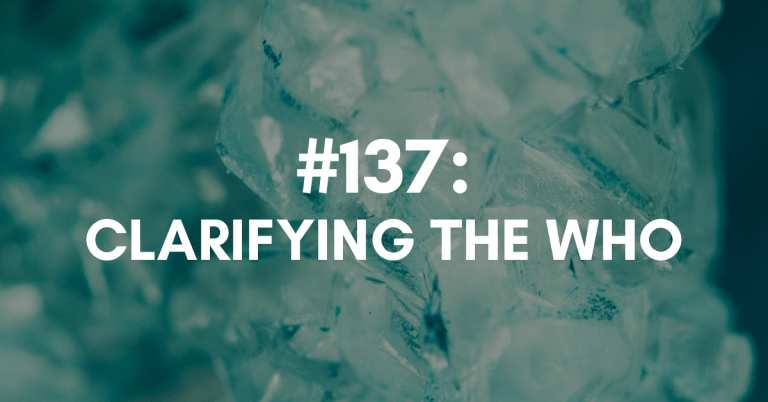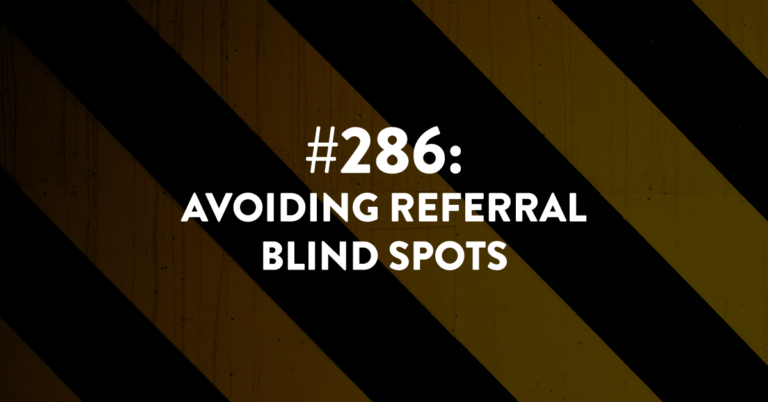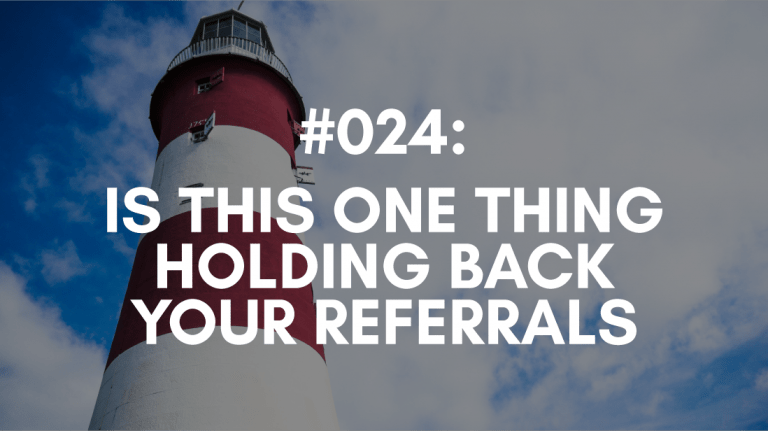Ep #316: How I Solved…Becoming & Staying Profitable
Profitability should be the top priority for business owners, as it is crucial for long-term success. Many business owners focus on revenue rather than profit, leading to financial struggles despite high revenue numbers.
While revenue is critical for business growth, profitability ensures that a business is sustainable and can weather unexpected challenges. By focusing on profit, business owners can ensure that they are not just chasing top-line numbers but are also building a strong financial foundation for their business.
Implementing a Profit First mentality in your business can be a game-changer. By prioritizing profit and setting aside funds for taxes, owner’s compensation, and profit first, you can ensure financial stability and growth in your business.
Shifting my mindset to focus on profit, not just revenue, has improved both my business’s financial health and provided me with peace of mind and a sense of control over my finances.
Links Mentioned During the Episode:
Profit First by Mike Michalowicz
Next Episode:
Next episode is #317, which is another episode created with you and your needs in mind.
Download The Full Episode Transcript
Read the Transcript Below:
Stacey Brown Randall: Welcome back to the Summer Series, where I am asking business owners, just like you, to share how they solved a nagging business problem that was out of their zone of genius. And I’m going slightly off script today with this episode, so stick with me.
Hey there, and welcome to episode 316 of the Roadmap to Referrals podcast, a show about helping you build a referable business. I’m your host, Stacey Brown Randall. My journey from a business failure to a successful business now 10 years in, I know generating referrals naturally and consistently has made all the difference. Working with clients around the world, we leverage the science of referrals, protect relationships above all else, and help you build a referable business.
Alright, so I’m going a little off script with this one. When I had business owners submit to me the topics that they would want to talk about for the podcast, there was one area that wasn’t covered. And I just knew I couldn’t have a summer series where we didn’t talk about this topic.
So, so far, you have heard us talk about productivity and managing tasks and projects. You’ve also heard us talk about solving a problem about creating video content for marketing. You’ve also heard us talking about business owners picking a niche and that process to go through that. And we have some more great episodes coming up after this one.
But I’m going to break the mold. I’m going to go off script. And I’m going to do that well, because, quite frankly, I can. It’s my podcast. Because this topic, it has to be discussed. And it is the topic of profitability.
You guys know if you’ve listened to this podcast, I like talking about businesses being profitable. And part of that reason is, is because one, I had a business before that was not profitable, which I will share that painful story in a minute.
And because I used to coach business owners, sometimes multimillion dollar business owners, and I knew, because as their business coach, they sometimes weren’t even paying themselves $40,000 to $50,000 a year. That’s no bueno. That is not good.
So I wanted to make sure that if we’re doing a summer series, we’re talking about all these amazing things and problems that other business owners have solved, we got to talk about profitability. So I just decided to talk about it myself.
So here’s the thing. Profitability and being profitable and having profits in your business throughout the year and, of course, at the end of the year, it should be the least taboo subject for a business owner. But it seems to be the most.
Most people are very proud and very happy to share how much revenue they have. But when you press them of how much of that revenue actually comes into their pockets, in addition to owner’s compensation, while taking care of everything else they need to take care of as a business owner, that’s not usually a number people will share. And they usually won’t even share the percentage as well.
And I get it, because that’s money. And we have been taught, particularly if you’re in the United States, no, no, no, we do not talk about that. We do not talk about money. But when we hit certain metrics for revenue, we will shout it from the mountaintops.
You have somebody hit six figures and they should be shouting it. That is a huge momentous occasion to hit six figures for the first time. Hitting a million dollars, again, you should shout over the mountaintops. That’s amazing.
But what it also does is it creates this false perception, that that means things are awesome and you’re just rolling in it. That is not typically the case. So I’m not taking anything away from multiple six figure and multiple seven figure and multiple eight figure businesses who are rolling in it. That is amazing. It’s just that that’s a minority, unfortunately.
And so there can be business owners who make $300,000, $600,000, $800,000 a year and not have a single thing to show for it at the end of the year. And so I just want to make sure that we have a conversation about profitability.
So first let me define profitability. My personal opinion, probably borrowed from a bunch of other people who’ve talked about profitability to me, is that it’s what’s left over. But that is not how you should think about it.
We talk about profitability as like, it is what is in the business, right? Whether you use it throughout the year, or you are keeping it in a business savings account, and you have paid taxes on it, and it’s sitting there, it’s like your savings. It’s like profit is the thing that has above and beyond the revenue, above and beyond the expenses. And we want it plentiful.
So here’s the thing. There’s probably a better way to define profit. But you know, if you’re a business owner for any length of time, you’ve heard someone say that. You’ve heard some say profit. Oh, that’s what’s left over.
That is actually the wrong way to think about it. But it is how I think a lot of people define it, right? I think we’re typically taught or that’s not true. I don’t actually think we’re taught this. I think we just somehow learn to adopt that profit is our revenue minus our expenses.
So when you take your revenue, you minus your expenses, what you’re left over with is profit. And that profit, for some people, could include their owner’s compensation and, of course, their ability to pay taxes.
For other people, profit is really actually, profit is that number that once you remove your owner’s compensation, once you remove taxes, once you remove operating expenses, then profit is the beautiful number that is left over.
But how we’re taught to think about it is: revenue minus my expenses, what’s left over is profit. And that is actually a terrible way to think about it. And it leads to many freak out moments. I know. I’ve had many of those moments myself.
So one of the things I’ve asked the other business owners was to share, when was that point where the straw broke the camel’s back? And it was a, let’s make this a priority moment for you.
And for some, you heard them talk about, well, this had been nagging me for years. And others, it was like, this dramatic thing happened in my personal life, and I had to go fix this problem in my business life so that didn’t happen again.
And so for me, this is one of those slow nagging problems. It built. It just came with me into every new year. Here we go, profit issue. Here we go, profit issue. year after year, it almost didn’t matter how much money I was making. It was just there hanging out, being like, you haven’t dealt with me yet. And so finally, of course, I did deal with it.
But the moment that I was like, I’m going to make this a priority, I need you to understand my mindset before I tell you like the moment I got there, because it matters.
So, I carried some pretty significant embarrassment from my very first business. So, if you know my story, you know my first business failed, right? I started it way back in 2009, ran it for four years until 2012, and then it failed, and then I had to go get a J-O-B and get a job.
And it wasn’t for about, I don’t know, another 15, 16 months later in that corporate job, before I was able to launch this business that I have now. So I overcame that business failure. I didn’t stay too long in corporate America. I got back out there and now I’m successful.
But I carried this, I’m not going to say shame, just embarrassment, I think is probably as deep as I probably allowed it to go because I was like, okay, this happens to everybody. And the failure part I carried for a while, but there’s actually another piece of embarrassment that I carried from my first business.
It was a comment that at the time my CPA made to me. And he said, basically Stacey, you didn’t make enough money you can’t even claim on your taxes, your childcare. Now, was that exactly what he said? Was that exactly what it looked like? Was that the exact correct term, like tax terminology? I don’t know. A CPA out there could probably correct me, but that’s what I heard.
And what I heard was, your business is a hobby, homie. It is not a business to the point where you can’t even claim your childcare because you got a hobby and not a business. And it was a devastating blow. And I carried embarrassment from that for a really, really long time. And I vowed, like, I’m not finding myself in this position again.
So for me, When I started my second business, knowing what I had experienced in my first business, in the beginning, the revenue was the driver. It was all about how much did I make? How quickly did I hit six figures in my first year?
How quickly did I hit double six figures, right? Like, how often was that happening? And what was the lag time? And when did I hit the next metric? And revenue was for a long time. Remember, I’ve been in business almost 11 years. Revenue was the driver for a long time.
And because the focus was so much on revenue, it also meant there was a number of years where I ended up with very little profit left over in the bank. And let’s be honest, I think sometimes that was just by luck. I just think God was like, oh gosh, throw that girl a bone, she needs some help.
So while revenue can be a driver, I get it, it’s a driver for almost every business is pick a revenue number, right? It’s not THE driver. And when you only focus on revenue, you think about your money differently. And when you think about profit, you think about smart spending decisions, because profit is where it’s at.
And so for me, I had been told over the years about various budget apps and ways to set up a spreadsheet. And every once in a while, I’d be like, oh, this is it. This is going to work. And I had gone down that path before, only it didn’t work. And really, it probably didn’t work because I wasn’t committed to making any of them work.
Because unfortunately, this problem nagged me for years, and I just swept it under the rug. And I needed that moment of like, okay, now time is time, it’s time to make a priority.
But I didn’t know what that would be until a client, a coaching client at the time, mentioned the book Profit First by Mike Michalowicz. Now, you may be familiar with Mike Michalowicz. He is a fabulous author. He is writing for entrepreneurs. That’s what his businesses are.
He has a number of books out there, Toilet Paper Entrepreneur, Pumpkin Plan, Clockwork, Fix This Next. I think All In is his most recent book. But Profit First is the book of his that I was like, yes, I got it. And it literally was how I thought about money got flipped on its head when I read that book.
And it was the aha for me that changed everything. I could see money differently. I could see money and profit and revenue and expenses and all the things in my business differently. And it was what I needed. For whatever reason, when I read that book, it was June, I think, the summer of 2019, I read that book. And I was like, I’m doing this. I’m going to make this happen.
And I remember showing to Norm, my husband, I created a 32-point checklist of all the things I needed to do and in what order I thought they would go. That I pulled from the book. I mean, it’s not like he’s like, here’s your massive checklist. It’s effectively that. But I went step by step as he was outlining in the book, and I wrote things down.
If you want a tip about how people read a book and then implement, it’s because we’re taking notes as we’re reading books. Most people read a book, think they remember, and then two days later forget, and they don’t put things into practice.
So if you want to read a book and actually put things into practice, you’ve got to make notes while you are reading the book. And that’s what I did. I was creating this what would become a 32-point checklist.
And for you, you may be like, uh-uh. It’s summer, and I’m super busy. Or I don’t want to work that hard, and I don’t have time for that. That’s OK, my friend. This may not be your barn-burning-burn-the-boats moment where you’re not looking back and you’re gonna fix your profit issue once and for all, but for me, June of 2019, that was it.
I found what I needed that I was willing to commit to. So then I started in August. I feel like I probably started right when the kids went back to school. I started in August, and it was all operational by October of 2019. And that was a huge weight off my shoulders.
And I also believe it is what saved me during COVID. Like most businesses, I took a hit in COVID. I lost like a 25% of like a revenue line from speaking engagements that I would get paid to do in person or even virtually. And so that is like, you know, you just don’t make that up in a pandemic year. That’s not how it works.
It also taught me and forced me to figure out that I could run my business and make more money and not have to do as many paid speaking engagements. My book came out in October of 2018. And so from October of 2018 through most of 2019, I was on the road a lot for speaking engagements.
I remember I counted one day I was home like 10 days in April of 2019. Ten days, I got three kids. Do you know what that does to your spouse? It’s a lot. It’s a lot of extra help. It’s a lot of extra work on one person.
And so it also taught me that, hey, I don’t have to do a bunch of speaking engagements to continue to build my business. I want to do them, and I love doing them. And now when I do them, I do them with intentionality, and it’s because it’s group that I want to speak to. But then sometimes it was like, who wants me? I’m coming. I had a book release, right?
But I do believe setting up Profit First in my business really, and getting the operational, in October of 2019 before I knew anything was coming, anything called COVID was coming, was really instrumental in my business, not just surviving 2020, but feeling like I actually thrived through it as well. And ended the year with profit, which I want to just spend a little bit of time about what that means.
So I want to share what was hard about the process, what I really enjoyed about the process. I want to also make sure I explain the process. I’m not going to do Mike’s job. He wrote an amazing book. You should go read it and implement it. And I’m not qualified. I’m not a certified profit first consultant so I’m not qualified to give you financial advice, obviously, or money management advice.
But this is from one business owner to another. So I want to talk about what it is, how it looks at my business, what I thought was hard about the process, what I really enjoyed about the process, and now what does it look like five years later.
Hey there, pardon the interruption. I hope that you’re enjoying our business series this summer focused on having extraordinary business owners talk about how they solved problems in their business that they didn’t know how to solve because it was out of their zone of genius. Don’t worry, we’ll be back on our topic of referrals when we wrap up this summer series.
Speaking of referrals, though, it is crazy to think that you could be just 90 days away from starting to double, triple, or quadruple your referrals. The roadmap and the support plus the accountability that you need, it’s just waiting on you. It’s all inside my coaching program, Building a Referable Business, which we call BRB for short.
Just go to StaceyBrownRandall.com/referable to learn about the program. And then if you’re interested, click on the link to submit your application. I personally review all applications and I’ll let you know if you’re a fit for the program. Then you can learn more and make your decision. Alright. Now back to the episode.
Okay, so let me make sure you understand how we define profit when you take a profit first mentality. So revenue comes into your business. I have an account, a bank account set up, and it’s called the income account. It is where all revenue, all income comes into the bank account, and it collects over the course of a month.
And that’s one of the beautiful things about Profit First, because you let your income collect. Because actually, when I’m running my business, let’s say in the month of June, when I’m running my business in the month of June, it’s based on what I made or what I needed to make, I guess I would say, what I pulled over from May.
So you’re never like, oh, I need that check to come in because I got to pay that bill. No, you got that covered. That’s one of the greatest things I love about Profit First. But it’s this idea that I have an income account and all the money comes into that account.
And then at the end of the month, I do a Profit First moment. Okay, it’s longer than a moment. But I do a Profit First where I sit down and I first move my compensation, my owner’s compensation into my owner’s comp bank account.
So, the whole idea behind Profit First is you’re going to have a bunch of bank accounts, which means you’re going to have to change banks because you’re going to have to be with a federal credit union so you can get free checking and savings for this to be financially viable.
So, the first thing is, is that I have the money that I’m paying myself immediately goes into the owner’s compensation account. That’s just how I choose to do it. But there’s three things that are happening when I do the at the end of the month profit moment.
And that is one, I put money in to pay myself for my next payroll. Two, I make sure I move over 15% for taxes. So whatever, let’s just say May, for sake of argument, whatever May brought in in revenue, I’m taking 15% of that and putting it into another account, which is my tax account.
And then I’m going in and taking 10% out of that, and I am moving that into a profit account. And I’m not touching my tax, and I’m not touching my profit account. And they just grow over the year.
Now, when I go to pay quarterly taxes, I do go into the tax account to pull money from that to pay quarterly taxes. But the idea is that tax account and that profit account, they just grow. So I know every month I’m getting paid, I’m saving for taxes, and I’m making sure that I have some profit left over.
There’s going to be some profit there because I’m forcing it by taking it first. Then whatever’s left is what I’m allowed to run my business on. Now, as my business has grown, I am very, very clear on what my business needs on a month-to-month basis in terms of my bills.
I basically just build a spreadsheet, and I’ve been tracking this stuff for years. So I know, hey, the company that I use that does my email list, that bill comes due every December. You better be ready to pay it, right?
I know that every month that I work with Kathy, my virtual assistant, I know about a range of what her hours are going to be and what that’s going to cost. So, I’m already planning for that.
So I know what’s effectively called my monthly nut in terms of my operating expenses, and then that money gets moved into the operating expense account, and that’s where the bills are paid or pulled from every month. So, that’s an income account, owner’s comp account, tax account, profit account, and an operating expense, or we call it OPEX, but an operating expense account as well.
And if there’s anything left above and beyond that, and many times there are, it gets swept into a business savings account that I just build until I have it to a point where I feel like if anything were to happen to my business, I’ve got a reserve of money that if I needed to, I could pay my people, I could pay myself, and we would be okay for a number of months. And that’s if the worst happened.
So that’s what Profit First looks like in my business. Again, I’m not doing it justice. Please just go read the book Profit First by Mike Michalowicz. You will thank me.
I just had somebody who read it. I was just talking to them, and I was like, you’ve got to go read this book. And so she listened, God bless, and she went and read it. And she was like, this is amazing. Trust me on this, okay? Go read Profit First.
Alright, what was the biggest pain point of this entire process? I’m going to be honest, changing banks. Huge pain in the butt. And I went with a credit union that I really like. But there’s this weird eight day and then 30 day, you can’t start using the money in the account. So I needed to know that in advance.
And so it’s like you get all excited to set up your accounts. And then you’re like, okay, you can start using your money in 30 days. And I’m like, what? So working through that, not my favorite thing. But it’s OK. But that was the biggest pain, which is changing banks. So I may have started in August but mentioned, if you remember, I said it wasn’t operational till October because it took all of September to get it all situated.
One thing I really enjoyed during that process is something that Mike walks you through in his book is the spending audit, like just paying attention to where you’re spending your dollars.
And I remember going through, like he walked you through how to do this, but it was like basically going through your bank statements for your expenses and going through your credit card statements for your expenses and figuring out where can I consolidate and what am I not using?
And I remember in like one day, I saved myself like a couple hundred bucks that would be reoccurring every single month. So that was over a thousand dollars I was going to save myself every year moving forward just by doing a spending audit.
And then I saved even more money by realizing some of the tools I used could be consolidated if I just went with a different tool. And so that process is always hard. There’s nothing easy about like changing tools and tech and things like that. But moving over to that has been a game changer.
And I’m also very cognizant now. Here we are almost five years later, very, very cognizant of when I make the decision to buy something that is reoccurring, making sure I understand, will I use this? And if I won’t, then I don’t buy it. And so that has been really, really important as well.
Okay, so the last thing I want to talk about is what does it look like, here we are now five years later, right? The cool thing is about my business is that it has continued to grow, and I think the mentality of having a focus on profit has been huge and just in terms of how I feel about money and the control factor and the blessing factor that money provides for me.
Because I didn’t mention this earlier, but there have been multiple times in my marriage with Norm, when he used to own restaurants, that we would get an email from the CPA that would be like, okay, your tax bill for last year is $60,000.
And we would look at each other, and we’d be like, you got that money? I ain’t got that money. Our credit cards don’t even go that high. Like, what is happening? Because we didn’t prepare for it.
And you would think, having been told by your CPA one time, you’ve got to get yourself out of a $60,000 hole, and here’s how we’re going to do it, and you’re going to figure out how to do it, you would think we wouldn’t land ourselves there again. Nope. We had to do it twice. Some lessons just had to be hard learned. We had to get ourselves out of those twice.
Now, I’m talking about, I mean, Norm opened his first restaurant in 2004. These were the early years. We have grown so much as humans, and parents, and adults, and as a couple. But these were like those first couple years. I was like, excuse me? Like, no, no, no.
We actually had to fire a CPA after that. I was like, I cannot talk to this person again. And we had moved to a different CPA because I was like, nobody should be surprising me with what my taxes are going to be. I should know what they are. We should be paying quarterly, and we should be living off of less if we have to pay quarterly taxes. Like, that just makes sense to me.
So again, for me, I just feel lighter running my business from a profit-first potential. And that doesn’t mean I had a ton of profit the first couple years I did this. Even like 10 grand in profit was like, whoa, we’re in the black people, we have profit, right? Now I chase an entirely different number that has different more zeros on the end of it that I want in profit in my business. But that’s good. That’s an important thing.
So now I run my business on the expenses that come after, number one, I have paid myself. Number two, I have saved 15% for taxes. And number three, I have saved at least 10% for profit, and then also putting anything extra into building up a business savings account. That’s just how I do it in my business.
And five years later, I still every month have a profit first day that I do every single month. And my vendors know because I told them way back in 2019, that I was going to pay bills on one day a month. So if you want your bill paid, get it to me by that date. If not, it’s going to come later. I’m just doing this once and moving on.
And so it has helped so much. And so I highly, highly encourage you to consider reading Profit First and putting that into your business. I didn’t know how to solve my profit problem. I went to an expert, and he told me. And then I did what he said, and then I had success.
And that’s what I want for you, too. That’s what I want for my clients. And they’re like, I don’t know how to generate referrals. You don’t have to. I will tell you. And just do what I say. And then you can have some success. It was the same thing when I decided to look at profitability different in my business. And I feel amazing. And my business feels amazing.
And I do know that while my business has continued to grow year after year, actually 2022 was a little bit down compared to ‘21 and ‘23. But as my business continues to grow year after year, I also know that if something did happen that I couldn’t anticipate, another global pandemic or something else happened, that I would be okay.
Because I’ve been building my business all along to be okay. And I think it’s really important. So that is what I want you to know and understand.
So of course, I’m going to link to The Profit First book by Mike Michalowicz in the show notes page for this episode. And of course, the show notes page for this episode is StaceyBrownRandall.com/316. That’s episode 316, 3-1-6. And don’t forget, Stacey has an E.
Alright, we’re back with another great episode next week created with you and your needs in mind. Until then, you know what to do, my friend. Take control of your referrals and build a referable business. Bye for now.







